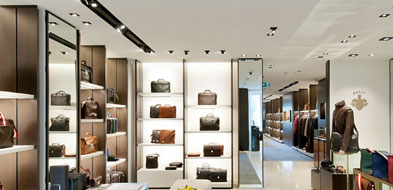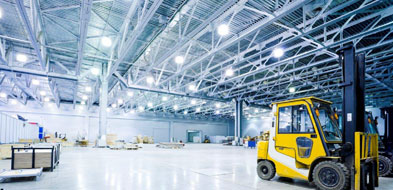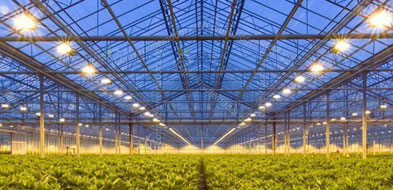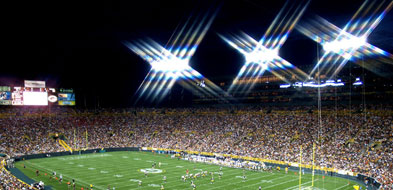Led lighting has grown significantly in recent years, reaching great results in terms of technology.
Its large-scale diffusion and application in every field, confirms the advantages of this new way of “seeing the light”.
It is not a coincidence that we remember the Nobel prize awarded in 2014 to the Japanese scientists Isami Akasaki and Hiroshi Amano and the American Shuji Nakamura, for inventing the Led lamps(light Emitting Diode); these revolutionary electronic devices use some materials'optical properties to produce light which is more efficient energy-wise, and more respectful to the environment.
With the introduction of the Led technology, today we have more efficient and durable alternatives compared to old lighting systems as incandescent light lamps, halogen and low energy fluorescent lamps.
 Streets
StreetsLED technology in the lighting of public areas, streets, squares, carparks and general transit areas.
 Commercial
CommercialBetter lighting substantially improves work performances in all fields, offices, shops production areas, etc…
 Industrial
IndustrialMaximum comfort and reliability in factories or industrial plants with high ceilings, always ensuring maximum productivity.
 Greenhouse
GreenhouseLED systems for agriculture, which can increase production thanks to controlled lighting both day and night.
 Sport
SportProfessional lighting systems studied to ensure better results in the field and to guarantee optimal visibility.
 GDO
GDOLED lighting solutions for all applications in various segments of the stores such as GDO and Supermarkets.
Top 10 Benefits of LED Lighting
1. Long Life
Long life time stands out as the number one benefit of LED lights. LED bulbs and diodes have an outstanding operational life time expectation of up to 50.000 hours. This is 11 years of continuous operation.
LED’s are different to standard lighting: They don’t really burn out and stop working like a standard light, moreover the lighting diodes emit lower output levels over a very long period of time and become less bright.
2. Energy Efficiency
Todays most efficient way of illumination and lighting, with an estimated energy efficiency of 80%-90% when compared to traditional lighting and conventional light bulbs. This means that about 80% of the electrical energy is converted to light, while a ca. 20% is lost and converted into other forms of energy such as heat.
With traditional incandescent light bulbs who operate at 20% energy efficiency only, a 80% of the electricity is lost as heat.
The long operational life time acts as a multiplicator and helps achieve even more energy efficiency, especially large scale and when thinking in terms of urban infrastructure projects, such as cities, railroads and airports.
Because the long life span of LED lights, also the maintenance work - think of all the work and energy it would take to purchase, stock and change the conventional light bulbs of an airport - you’ll see that you can make significant energy savings also when it comes to maintenance and replacement due to the long operational life times of LED lighting.
3. Ecologically Friendly
LED lights are free of toxic chemicals. Most conventional fluorescent lighting bulbs contain a multitude of materials like e.g mercury that are dangerous for the environment.
LED lights contain no toxic materials and are 100% recyclable, and will help you to reduce your carbon footprint by up to a third. The long operational life time span mentioned above means also that one LED light bulb can save material and production of 25 incandescent light bulbs. A big step towards a greener future!
4. Durable Quality
LEDs are extremely durable and built with sturdy components that are highly rugged and can withstand even the roughest conditions.
Because LED lights are resistant to shock, vibrations and external impacts, they make great outdoor lighting systems for rough conditions and exposure to weather, wind, rain or even external vandalism, traffic related public exposure and construction or manufacturing sites.
5. Zero UV Emissions
LED illumination produces little infrared light and close to no UV emissions.
Because of this, LED lighting is highly suitable not only for goods and materials that are sensitive to heat due to the benefit of little radiated heat emission, but also for illumination of UV sensitive objects or materials such a in museums, art galleries, archeological sites etc.
6. Design Flexibility
LEDs can be combined in any shape to produce highly efficient illumination. Individual LEDs can be dimmed, resulting in a dynamic control of light, color and distribution. Well-designed LED illumination systems can achieve fantastic lighting effects, not only for the eye but also for the mood and the mind.
LED mood illumination is already being used in airplanes, classrooms and many more locations and we can expect to see a lot more LED mood illumination in our daily lives within the next few years.
7. Operational in Extremely Cold or Hot Temperatures
LED are ideal for operation under cold and low outdoor temperature settings. For fluorescent lamps, low temperatures may affect operation and present a challenge, but LED illumination operates well also in cold settings, such as for outdoor winter settings, freezer rooms etc.
8. Light Dispersement
LED is designed to focus its light and can be directed to a specific location without the use of an external reflector, achieving a higher application efficiency than conventional lighting. Well-designed LED illumination systems are able to deliver light more efficiently to the desired location.
9. Instant Lighting e Frequent Switching
LED lights brighten up immediately and when powered on, which has great advantages for infrastructure projects such as e.g traffic and signal lights.
10. Low-Voltage
A low-voltage power supply is sufficient for LED illumination. This makes it easy to use LED lighting also in outdoor settings, by connecting an external solar-energy source and is a big advantage when it comes to using LED technology in remote or rural areas.
















